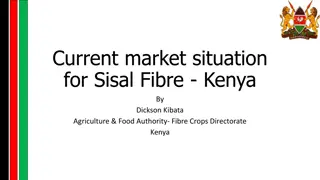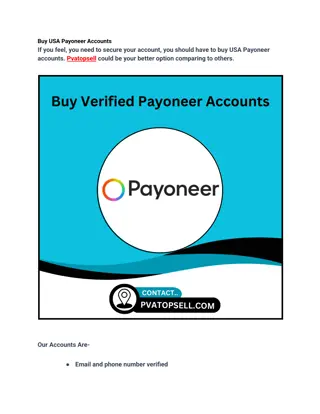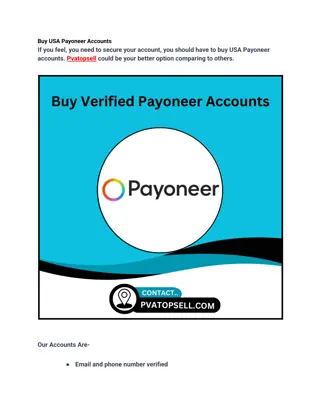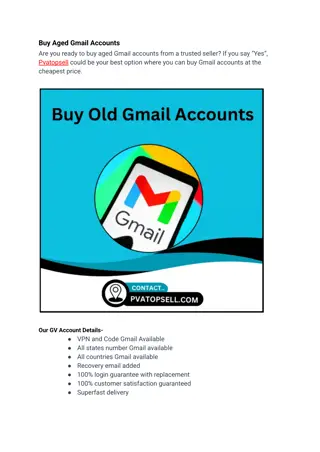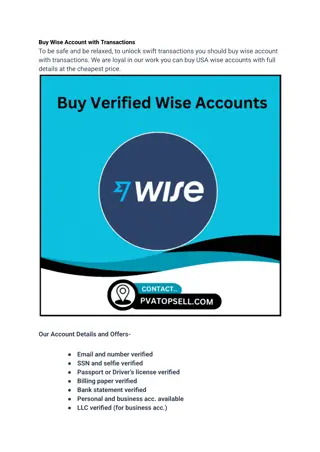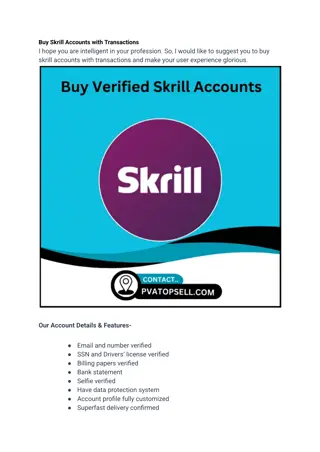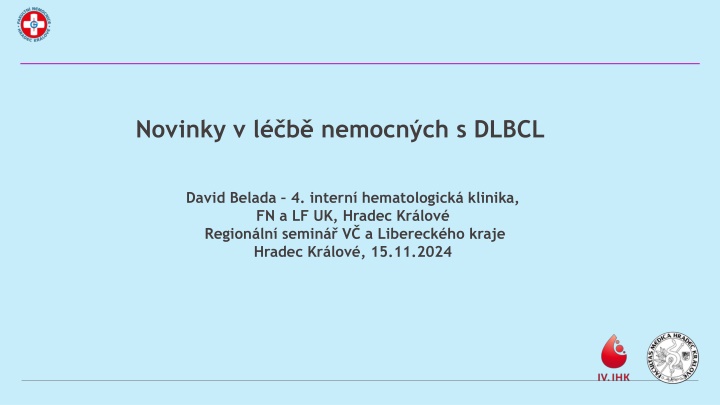
DLBCL Novelties: Insights from Hematological Clinic Specialists
Delve into the latest updates on DLBCL management by Dr. David Belada, an intern at the Hematological Clinic, FN and LF UK in Hradec Kralove. Explore advancements, study designs, and treatment insights related to DLBCL. Stay informed about key developments in lymphoma research and advisory board engagements with leading pharmaceutical companies.
Download Presentation

Please find below an Image/Link to download the presentation.
The content on the website is provided AS IS for your information and personal use only. It may not be sold, licensed, or shared on other websites without obtaining consent from the author. If you encounter any issues during the download, it is possible that the publisher has removed the file from their server.
You are allowed to download the files provided on this website for personal or commercial use, subject to the condition that they are used lawfully. All files are the property of their respective owners.
The content on the website is provided AS IS for your information and personal use only. It may not be sold, licensed, or shared on other websites without obtaining consent from the author.
E N D
Presentation Transcript
Novinky v lb nemocnch s DLBCL David Belada 4. intern hematologick klinika, FN a LF UK, Hradec Kr lov Region ln semin V a Libereck ho kraje Hradec Kr lov , 15.11.2024
Prohlen o stetu zjm BMS - konzultace, ast na advisory boardu Roche konzultace, ast na advisory boardu, podpora vzd l v n Gilead - ast na advisory boardu, podpora vzd l v n Takeda konzultace, ast na advisory boardu, podpora vzd l v n Abbvie - konzultace, ast na advisory boardu, podpora vzd l v n , podpora v zkumu Beigene - konzultace, ast na advisory boardu, podpora v zkumu Morphosys - konzultace, ast na advisory boardu, podpora vzd l v n , podpora v zkumu Janssen Cilag - konzultace, ast na advisory boardu, podpora v zkumu Astra Zeneca - konzultace, ast na advisory boardu, podpora vzd l v n , podpora v zkumu Swixx Biopharma - konzultace, ast na advisory boardu, podpora v zkumu Sobi konzultace, ast na advisory boardu Regeneron - podpora v zkumu
Osnova 1. Lisocaptagene Maraleucel v l b lymfom 2. Zku enosti s glofitamabem v r mci SLP 3. Algoritmus l by DLBCL v roce 2024 4. Z v r 3
Osnova 1. Lisocaptagene Maraleucel v l b lymfom 4
Lisocabtagene Maraleucel (liso-cel) CD19-directed, defined composition, 4-1BB CAR T cell product CD8+ and CD4+ CAR+ T cell components are administered separately at target doses of CD8+ and CD4+ CAR+ T cells Leukapheresis Material Immunomagnetic selection For CD8+ and CD4+ T cells The defined composition of liso-cel results in:a CD8+ T cells CD4+ T cells Consistent administration of CD8+ and CD4+ CAR+ T cell dose Activation and lentiviral transduction Low variability in the CD8+/CD4+ ratio CD8+ CAR+ T cells in vitro expansion CD4+ CAR+ T cells Formulation Drug product Sequential infusion CD4+ CD8+ component component aThe clinical impact of the defined composition is unknown. Abbreviations are defined in the Notes Page section. 5
Study design Enrollment and leukapheresis PET-positive disease reconfirmed Follow-up On-study: 24 months Long-term: up to 15 years after last liso-cel treatment Lymphodepletion FLU 30 mg/m2 and CY 300 mg/m2 3 days Bridging therapy allowed liso-cel Screen 2-7 days after FLU/CY liso-cel manufacturing Patient Eligibility Dose Expansion, n = 83 Dose Confirmation, n = 126 LBCL after 2 lines of therapy DLBCL NOS (de novo) DLBCL NOS (transformed from FL, CLL, MZL, or other) HGBCL (double/triple hit) PMBCL FL3B Prior HSCT allowed (auto/allo) ECOG PS of 0-2 Patients with secondary CNS lymphoma were eligible CrCl > 30 mL to < 60 mL/min LVEF 40% to < 50% No lower threshold for ALC, ANC, platelets, or hemoglobin Dose Finding, n = 60a DL1 50 106CAR+ T cells DL1 DL2 DL3 100 106 CAR+ T cells DL2 100 106CAR+ T cells DL3 150 106CAR+ T cells End Points Primary Adverse events, probability of DLTs, ORR by IRC Secondary CR rate by IRC, duration of response, PFS, OS, PK ClinicalTrials.gov: NCT02631044. Data cutoff date: August 12, 2019. aDL1 was also tested as a two-dose regimen, with a second dose of liso-cel given 14 days after first dose. Abbreviations are defined in the Notes Page section. Abramson JS et al. Lancet 2020;396:839-852.
TRANSCEND: Baseline Characteristics (1/2) Efficacy Evaluable Patients (N = 192) 63 (18-86) 69 Characteristic Median age (range), years Male, % Demographic White Black Asian Median prior therapies (range), n LBCL subtypes, % De novo DLBCL DLBCL transformed from indolent lymphoma HGBCL PMBCL FL3B Refractory to last therapy, % Primary refractory disease, % Prior HSCT, % CNS involvement, % 84 6 4.7 3 (1-8) 53 25 14 7 1.0 64 53 37 2.6 BREYANZI (lisocabtagene maraleucel) [package insert]. Bothell, WA: Juno Therapeutics Inc., a Bristol-Myers Squibb Company; 2022.
TRANSCEND: IRC-Assessed Efficacy Liso-cel Arm (n = 192) 141 (73) [67, 80] 104 (54) [47, 61] 37 (19) [14, 26] 1.0 (0.7-8.9) 1.0 (0.8-12.5) 104 6 17 2.2 (0.7-11.6) 141 16.7 [5.3, NR] 0.0+-23.5+ NR [16.7, NR] 0.7+-23.5+ 1.4 [1.1, 2.2] 0.0+-22.8+ Response durations longer in patients who achieved a CR, as compared to patients with a best response of PR Of patients who achieved CR (n = 104), 68 (65%) had remission lasting 6 months and 64 (62%) had remission lasting 9 months Overall response ratea, n (%) [95% CI] Complete response, n (%) [95% CI] Partial response, n (%) [95% CI] Median time to first response (CR or PR, range), months Median time to first CR (range), months Patients who achieved CR, n Initial stable disease, n Initial PR, n Median time to improvement (range), months Responders, n Median DOR [95% CI]b, months Rangec Median DOR if best overall response is CRa [95% CI], months Rangec Median DOR if best overall response is PRa [95% CI], months Rangec aPer the Lugano criteria, as assessed by an IRC. bKM method was used to obtain 2-sided 95% confidence intervals. cA + sign indicates a censored value. BREYANZI (lisocabtagene maraleucel) [package insert]. Bothell, WA: Juno Therapeutics Inc., a Bristol-Myers Squibb Company; 2022.
Efficacy: PFS in the efficacy-evaluable LBCLtreated analysis set CR (median NR, 95% CI, NR-NR) Total (median 6.8 months, 95% CI, 3.3-14.1) PR (median 2.8 months, 95% CI, 2.1-3.0) SD and PD (median 1.1 months, 95% CI, 1.0-1.6) 100 80 60 PFS (%) 40 20 0 0 3 6 9 12 15 18 21 24 27 30 Time since treatment (months) Number at risk CR PR 136 50 70 256 116 14 98 85 63 45 31 23 14 1 0 2 0 2 2 2 2 0 SD and PD 3 Total 133 100 87 65 47 33 23 14 1 0 PFS is not included in the full prescribing information, however, was evaluated as a secondary endpoint in the TRANSCEND NHL 001 study Median follow-up for PFS was 12.3 months (95% CI, 12.0 17.5) Median PFS was 6.8 months (95% CI, 3.3 14.1) 1-year PFS: 44.1% (95% CI, 37.3-50.7) Figure adapted from: Abramson et al. Lancet 2020. Note: Data presented may be in addition to or different from data included in the full prescribing information. Refer to the USPI for full prescribing information and medication guide. Abbreviations are defined in the Notes Page section. Abramson JS et al. Lancet 2020;396:839-852.
Efficacy: OS in the efficacy-evaluable LBCLtreated analysis set CR (median NR, 95% CI, NR-NR) Total (median 21.1 months, 95% CI, 13.3-NR) PR (median 9.0 months, 95% CI, 6.0-10.4) SD and PD (median 5.1 months, 95% CI, 2.9-6.5) 100 80 60 OS (%) 40 20 0 0 3 6 9 12 15 18 21 24 27 30 33 36 39 42 45 Time since treatment (months) CR PR 136 135 45 41 221 128 33 27 188 113 20 14 147 94 68 48 36 26 16 13 8 5 1 0 50 70 8 7 3 3 3 1 0 1 SD and PD 1 1 1 1 9 1 6 0 1 Total 256 109 74 52 37 27 17 14 0 OS is not included in the full prescribing information, however, was evaluated as a secondary endpoint in the TRANSCEND NHL 001 study Median follow-up for OS was 17.5 months (95% CI, 12.9-17.8) Median OS was 21.1 months (95% CI 13.3 NR) Estimated 12-month OS: 58% (95% CI, 51.3-63.8) 1-year OS for patients achieving CR: 86% (95% CI, 78.2-90.5) Figure adapted from: Abramson et al. Lancet 2020. Note: Data presented may be in addition to or different from data included in the full prescribing information. Refer to the USPI for full prescribing information and medication guide. Abbreviations are defined in the Notes Page section. Abramson JS et al. Lancet 2020;396:839-852.
Efficacy: OS in the efficacy-evaluable LBCLtreated analysis set CR (median NR, 95% CI, NR-NR) Total (median 21.1 months, 95% CI, 13.3-NR) PR (median 9.0 months, 95% CI, 6.0-10.4) SD and PD (median 5.1 months, 95% CI, 2.9-6.5) 100 80 60 OS (%) 40 20 0 0 3 6 9 12 15 18 21 24 27 30 33 36 39 42 45 Time since treatment (months) CR PR 136 135 45 41 221 128 33 27 188 113 20 14 147 94 68 48 36 26 16 13 8 5 1 0 50 70 8 7 3 3 3 1 0 1 SD and PD 1 1 1 1 9 1 6 0 1 Total 256 109 74 52 37 27 17 14 0 OS is not included in the full prescribing information, however, was evaluated as a secondary endpoint in the TRANSCEND NHL 001 study Median follow-up for OS was 17.5 months (95% CI, 12.9-17.8) Median OS was 21.1 months (95% CI 13.3 NR) Estimated 12-month OS: 58% (95% CI, 51.3-63.8) 1-year OS for patients achieving CR: 86% (95% CI, 78.2-90.5) Figure adapted from: Abramson et al. Lancet 2020. Note: Data presented may be in addition to or different from data included in the full prescribing information. Refer to the USPI for full prescribing information and medication guide. Abbreviations are defined in the Notes Page section. Abramson JS et al. Lancet 2020;396:839-852.
Study design TRANSFORM a global, randomized, open-label, phase 3 study PET-positive disease reconfirmed Key eligibility Age 18-75 years Autologous HSCT eligible LBCL refractory to or relapsed 12 months after initial response to first-line therapy including anthracycline and an anti-CD20 mAb DLBCL NOS DLBCL transformed from indolent NHL HGBCL with rearrangements of MYC and either BCL2, BCL6, or both with DLBCL histology PMBCL T-cell/histiocyte-rich LBCL FL grade 3B ECOG PS 1 Adequate organ function PET-positive disease No minimum threshold for ALC Secondary CNS lymphoma allowed Lymphodepletion FLU 30 mg/m2 IV and CY 300 mg/m2 IV 3 days Primary endpoint: EFSb(per IRC) 1 cycle of bridging therapy with R- DHAP, R-ICE, or R-GDP allowed during liso-cel manufacturing Key secondary endpoints: CR rate, PFS, and OS Liso-cel R Other secondary endpoints: 100 106 CAR+ T cells Leukapheresis 1:1 ORR, DOR, EFS, OS rates at 6,12, 24, and 36 months, safety, HRQoL, and hospital resource utilization SOCa (3 cycles, IV) R-DHAP, R-ICE, or R-GDP followed by HDCT (carmustine, etoposide, cytarabine, and melphalan) and autologous HSCT Exploratory endpoints: Cellular kinetics and B-cell aplasia Stratified by Response to first-line therapy (relapsed vs refractory) sAAIPI (0 1 vs 2 3) Crossover to liso-cel allowed CR or PR not achieved after 3 cycles of immunochemotherapy PD at any time Need to start new antineoplastic therapy due to the absence of CR 18 weeks after randomization ClinicalTrials.gov: NCT03575351. Data cutoff date: March 8, 2021. aA switch within one of the 3 protocol-defined salvage regimens was allowed in case of toxicity or unsatisfactory response. bEFS is defined as the time from randomization to death from any cause, PD, not achieving a CR or PR by 9 weeks after randomization, or start of new antineoplastic therapy due to efficacy concerns, whichever occurred first. Abbreviations are defined in the Notes Page section. Kamdar M et al. Lancet. 2022;399:2294 2308.
TRANSFORM: Baseline Characteristics (ITT set) Bridging chemotherapy was permitted between leukapheresis and the start of lymphodepleting chemotherapy Efficacy Evaluable Patientsa (N = 184) 59 (20-75) 57 Characteristic Median age (range), years Male, % Demographic, % White Black Asian LBCL subtypes, % De novo DLBCL NOS HGBCL PMBCL DLBCL transformed from indolent lymphoma Prior response status, % Primary refractory Relapsedb 58/92 (63%) patients treated with liso-cel received bridging therapy 59 4 10 Liso-cel was administered in the inpatient (79%) and outpatient (21%) setting 55 23 10 8 73 27 aIncludes 92 liso-cel-treated patients and 92 SOC-treated patients. bRelapsed defined as relapsed disease within 12 months of achieving CR to first-line therapy. 1. BREYANZI (lisocabtagene maraleucel) [package insert]. Bothell, WA: Juno Therapeutics Inc., a Bristol-Myers Squibb Company; 2022. 15
Lisocabtagene maraleucel vs standard of care with salvage chemotherapy followed by autologous stem cell transplantation as second-line treatment in patients with relapsed or refractory large B-cell lymphoma: 3-year follow-up from the randomized, phase 3 TRANSFORM study Manali Kamdar, MD, MBBS,1 Scott R. Solomon, MD,2 Jon Arnason, MD,3 Patrick B. Johnston, MD, PhD,4 Bertram Glass, MD,5 Veronika Bachanova, MD, PhD,6 Sami Ibrahimi, MD,7 Stephan Mielke, MD,8 Pim Mutsaers, MD,9 Francisco Hernandez-Ilizaliturri, MD,10 Koji Izutsu, MD, PhD,11 Franck Morschhauser, MD, PhD,12 Matthew Lunning, DO,13 Victor A. Chow, MD,14 Josu Santamaria, MSc,15 Silvia Colicino, PhD,15 Ken Ogasawara, PhD, MPH,16 Lara Stepan, BS,14 Jeremy S. Abramson, MD, MMSc17 1University of Colorado Cancer Center, Aurora, CO, USA; 2Northside Hospital Cancer Institute, Atlanta, GA, USA; 3Beth Israel Deaconess Medical Center, Boston, MA, USA; 4Mayo Clinic, Rochester, Rochester, MN, USA; 5Helios Klinikum Berlin-Buch, Berlin, Germany; 6University of Minnesota, Minneapolis, MN, USA; 7University of Oklahoma Stephenson Cancer Center, Oklahoma City, OK, USA; 8Karolinska Institutet and University Hospital; Karolinska Comprehensive Cancer Center, Karolinska ATMP Center, Stockholm, Sweden; 9Erasmus University Medical Center, Rotterdam, Netherlands; 10Roswell Park Comprehensive Cancer Center, Buffalo, NY, USA; 11National Cancer Center Hospital, Tokyo, Japan; 12Centre Hospitalier Universitaire de Lille, Groupe de Recherche sur les formes Injectables et les Technologies Associ es, Lille, France; 13University of Nebraska Medical Center, Omaha, NE, USA; 14Bristol Myers Squibb, Seattle, WA, USA; 15Celgene, a Bristol-Myers Squibb Company, Boudry, Switzerland; 16Bristol Myers Squibb, Princeton, NJ, USA; 17Massachusetts General Hospital Cancer Center, Harvard Medical School, Boston, MA, USA Abstract number 7013
TRANSFORM Event-free survival based on IRC assessment (ITT set) 100 Median study follow-up: 33.9 months 36-month EFS rate 90 Liso-cel arm 45.8% (95% CI, 35.2 56.5) SOC arm 19.1% 80 (95% CI, 11.0 27.3) Event-free survival, % 70 60 Median 29.5 mo (95% CI, 9.5 NR) 50 40 30 Median 2.4 mo (95% CI, 2.2 4.9) 20 10 + Censored Stratified HR = 0.375 (95% CI, 0.259 0.542) 0 0 2 4 6 8 10 12 14 16 18 20 22 24 26 28 30 32 34 36 38 Time from randomization, months No. at risk Liso-cel arm SOC arm 92 92 87 66 76 39 62 32 59 27 54 22 51 20 49 20 47 20 46 20 45 20 45 20 43 19 43 19 42 19 41 18 40 17 7 3 2 1 0 0 NR, not reached.
Progression-free survival based on IRC assessment and overall survival (ITT set) TRANSFORM PFS OS 100 100 Median study follow-up: 33.9 months Median study follow-up: 33.9 months 90 90 36-month PFS rate Liso-cel arm 50.9% (95% CI, 39.9 62.0) 36-month OS rate Liso-cel arm 62.8% (95% CI, 52.7 72.9) SOC arm 26.5% SOC arm 51.8% 80 80 (95% CI, 15.9 37.1) (95% CI, 41.2 62.4) Progression-free survival, % 70 70 Median NR (95% CI, 42.8 NR) Overall survival, % Median NR (95% CI, 12.6 NR) 60 60 50 50 40 40 Median NR (95% CI, 18.2 NR) 30 30 Median 6.2 mo (95% CI, 4.3 8.6) 20 20 10 10 + Censored + Censored Stratified HR = 0.422 (95% CI, 0.279 0.639) Stratified HR = 0.757 (95% CI, 0.481 1.191) 0 0 0 2 4 6 8 10 12 14 16 18 20 22 24 26 28 30 32 34 36 38 0 2 4 6 8 10 12 14 16 18 20 22 24 26 28 30 32 34 36 38 40 42 44 46 48 50 52 Time from randomization, months Time from randomization, months No. at risk Liso-cel arm SOC arm No. at risk Liso-cel arm SOC arm 92 92 88 66 79 42 63 33 60 27 55 22 52 20 50 20 48 20 47 20 46 20 46 20 44 19 44 19 43 19 42 18 41 17 7 3 2 1 0 0 92 92 88 85 82 78 74 69 65 65 63 62 58 58 58 56 56 50 38 29 24 24 17 16 12 92 88 81 79 74 66 63 61 60 53 51 50 50 50 49 48 47 40 32 22 18 16 13 12 6 2 1 0 4 57 (62%) patients in SOC arm crossed over to receive liso-cel
Lisocel shrnut Breyanzi bude k dispozici od 2.Q 2025 k l b pacient ve 2. a vy linii s DLBCL v esk republice
Osnova 1. Lisocaptagene Maraleucel v l b lymfom 2. Zku enosti s glofitamabem v r mci SLP 3. Algoritmus l by DLBCL v roce 2024 4. Z v r
vod Specifick l ebn program zah jen 6/2023 pro 4. a vy linii l by DLBCL Zapojen centra v r mci R: VFN Praha, FN Kr lovsk Vinohrady, FN Plze , FN Hradec Kr lov , FN Brno, FN Ostrava, FN Olomouc
Glofitamab - SLP Celkem schv leno: 28 pacient Glofitamab pod n u: 26 pacient (1x jen obinutuzumab, 1x nezah jeno progrese stavu) L ba prvn ho pacienta zah jena: 11.8.2023 (FN Olomouc), posledn pacient zah jen: 19.6.2024 Zastoupen center: FN KV: 6 FN HK, FN Olomouc: 5 VFN Praha: 4 FN Plze : 3 FN Brno: 2 FN Ostrava: 1
Glofitamab SLP charakteristika souboru (n=26) Charakteristika N=26 V k (medi n, rozptyl) ensk pohlav Stadium III/IV IPI 3-5 PS 0/1/2 Extranod ln posti en Medi n po tu p edchoz ch terapi 72 (34-85) 16 (62 %) 22 (85 %) 19 (73 %) 4/15/7 22 (85 %) 3 (3-5) Doba schv len (medi n, rozptyl): 7 dn (1-22)
Glofitamab SLP charakteristika souboru (n=26) Charakteristika N=26 21 (81 %) 14 (54 %) 10 (38 %) 4 (15 %) 10 (38 %) 7 (2-13) R-CHOP v 1.linii l by Prim rn refraktern * Relaps >12M od skon en 1.linie Po ASCT Po CAR-T Doba od CAR-T k zah jen l by (m s ce) Zah jen l by <6M od p edchoz terapie 14 (54 %) *nedosa en CR po 1. linii l by
Glofitamab SLP lba (n=26) Charakteristika Po et podan ch cykl (medi n) L ba ukon ena dle pl nu L ba ukon ena p ed asn L ba pokra uje CRS: celkem/gr.1/gr.2 Tocilizumab pod n D lka trv n CRS (medi n, dny) prava CRS N=26 4 (1-12) 1 14 * 11 11/7/4 (42 %) 6 (23 %) 2 (1-5) 11/11 * D vody p ed asn ho ukon en Progrese (9) mrt (3) Ostatn (2) infekce, CMP
Glofitamab SLP lba (n=26) Charakteristika N=26 0 10 (38 %) 8 (31 %) 7/24 (29 %) 3 (12 %) ICANS Infekce b hem l by * Ostatn toxicita gr.3/4 ** IgG <4g/l Substituce Ig * typy infekc : Bakteri ln (7), Herpes zoster (1), RS viry (1), scabies (1) ** neutropenie, trombocytopenie
Glofitamab SLP vsledky lby Charakteristika N=19 5 (26 %) 5 (26 %) 1 (4 %) 8 (30 %) 7 CR PR SD Progrese Zat m nehodnoceno ORR 10/19 (52 %)
Glofitamab SLP dal sledovn N=26 0 2/6 (33 %) 16 10 * Relaps z CR Progrese z PR/SD ije mrt * D vody mrt : progrese (4), infekce (2), nezn mo (4)
Glofitamab SLP - PFS Medi n PFS: 3 m s ce
Glofitamab SLP - OS Medi n OS: nedosa en Medi n sledov n : 5 m s c
Glofitamab shrnut COLUMVI m od 7/2024 hradu v r mci 3. a vy linie l by pacient s DLBCL v esk republice
Algoritmus lby DLBCL v roce 2024 Progrese, relaps, nedosa en CR 1. linie: R-CHOP (IPI 0-2) Pola-R-CHP (IPI 3-5) doba od ukon en l by 1.linie > 12 m s c < 12 m s c vhodn pro CAR-T? vhodn pro ASCT? ne ano ne ano axicel/lisocel z chrann l ba + ASCT L ba 2. a vy linie: - imunochemoterapie(PolaBR, R-GEMOx) - tafasitamab* + lenalidomid* - CAR-T (pokud nepod ny ve 2. linii) - Glofitamab (3+) - Epcoritamab * (3+) - Loncastuximabtesirine (3+) - klinick studie - paliativn terapie
Konzultujte ANONYMN postup terapie u Vaeho pacienta ODBORN KOLEGIUM je tu pro V s a dotazy zodpov d OBRATEM Konzultovan p pady publikujeme na webu pro ely EDUKACE P in me novinky Z OBORU - guidelines, kazuistiky, p edn ky, l nky, podcasty Seznamte se s garanty odborn ch sekc Podp rn terapie a paliativn p e An mie, cytopenie a vz cn choroby Akutn leuk mie Myelodysplastick syndrom Tromb za a hemost za Myeloproliferativ n onemocn n Lymfomy a CLL Myelom prof. MUDr. Marek Trn n , CSc. prof. MUDr. Michael Doubek, Ph.D. doc. MUDr. Anna Jon ov , Ph.D. prof. MUDr. Pavel k, Ph.D. prof. MUDr. Miroslav Penka, CSc. prof. MUDr. Edgar Faber, CSc. prof. MUDr. Tom Koz k, Ph.D. prof. MUDr. Roman H jek, CSc. Odborn partne i port lu



